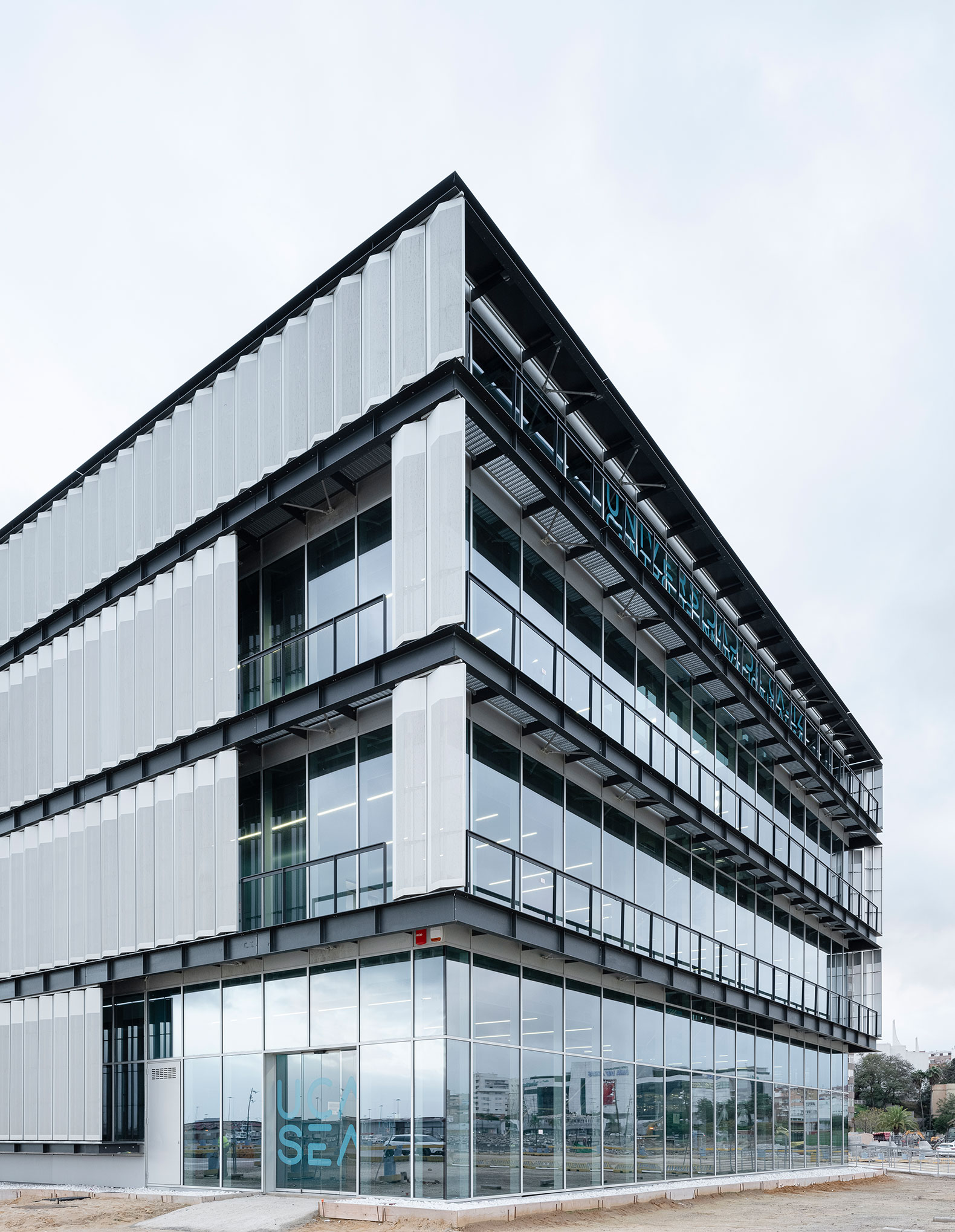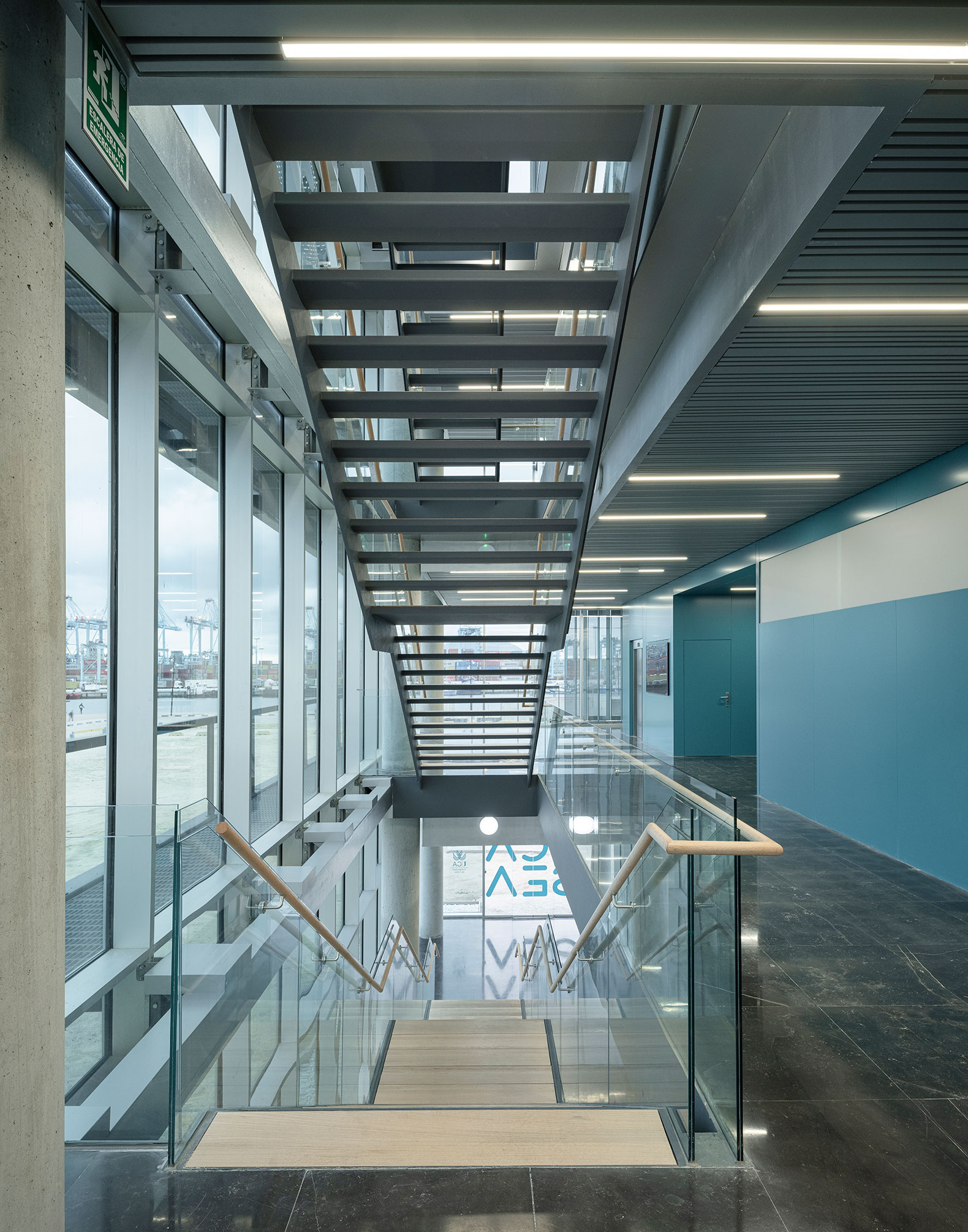The UCA-SEA building designed by Estudio Carbajal includes laboratory, administrative and teaching areas in its program in order to respond to the role of coordinator in the European University of the Seas project granted by the European Union to the University of Cadiz. The architects aim to generate a rational building, accessibility, a clear internal organization, and easy-to-identify routes; at the same time being versatile and flexible. The service areas are organized in a band that acts as a cushion for the work spaces, while the socialization spaces face the future boulevard that will connect the city with the port for the enjoyment of panoramic views of the landscape.
It is a three-story cubic volume with a garden roof and photovoltaic panels and an envelope with motorized slats that protect from sunlight. Few materials are used, such as aluminum, steel, glass and natural stone and a global geometric modulation allows construction systems and industrialized finishes that reduce work execution times while promoting energy efficiency.

UCA-SEA Innovation Center by Estudio Carbajal. Photograph by Fernando Alda.
Description of project by Estudio Carbajal
The project is part of the building complex promoted by the Port Authority of Algeciras together with the University of Cádiz on the port front known as Llano Amarillo, an emblematic performance for the city and these administrations. The functional program of the UCA-SEA (laboratories, administrative areas and spaces for teaching) aims to address the contents derived from the granting by the European Union to the University of Cádiz of the role of coordinator in the European University of the Seas project.
The aim has been for a rational and contemporary building, with comfortable accessibility and easy control, clear in its internal organization, also clear in its circulations that are easy to identify by users and visitors. Flexible and versatile in its compartments and mode of occupancy and comfortable in its work areas. The facilities and toilet spaces, concentrated in a strip of services, serve as a filter between the lobbies and laboratories and other work areas. With a strict geometric modulation that allows to take advantage of industrialized construction systems and finishes, that have a favorable impact on the execution times of the work and the necessary energy efficiency. Very few materials have been used, basically aluminum, steel and natural stone. A three heights cubic volume with an envelope protected from sunlight with purpose-designed motorized slats, completed with a garden roof plan and in turn equipped with a covering of photovoltaic panels at the top.

UCA-SEA Innovation Center by Estudio Carbajal. Photograph by Fernando Alda.
Inside, the relationship areas focus on the future boulevard that will connect the city with the dock so that users can enjoy magnificent panoramic views of the landscape and the port's activity, while the transparency of its northern façade is a sign for the citizens of the character and work of the University.
The delay in the execution of the second phase and the unfinished urbanisation currently penalizes the understanding and use of the project for which, in the meantime, the Port has built a provisional access to the building.








































